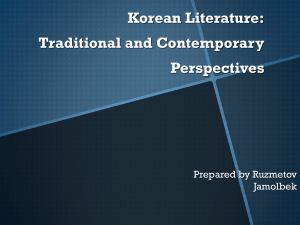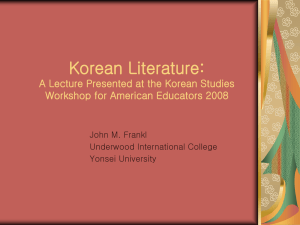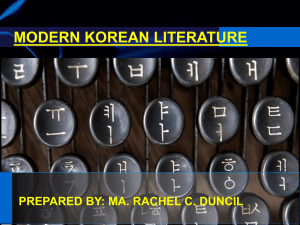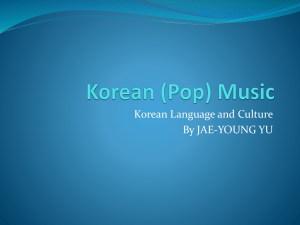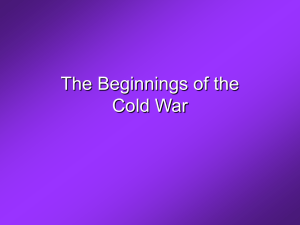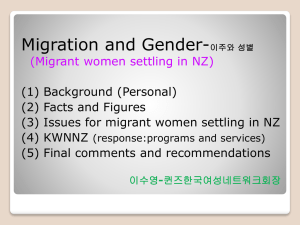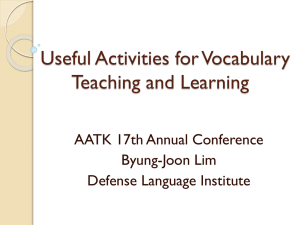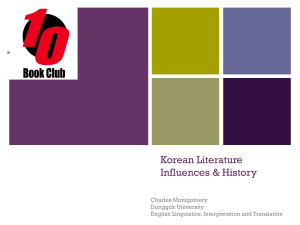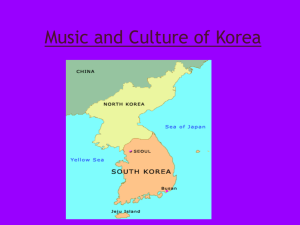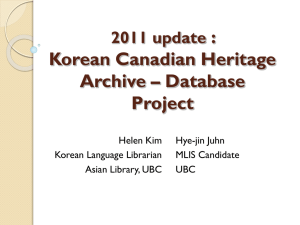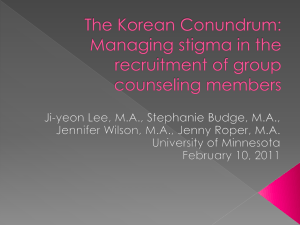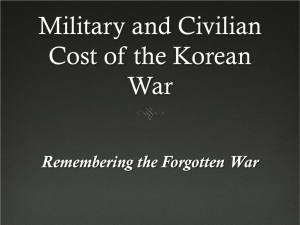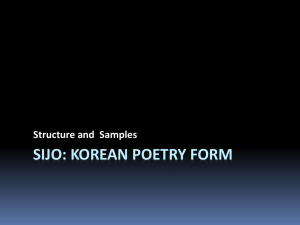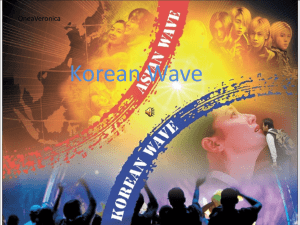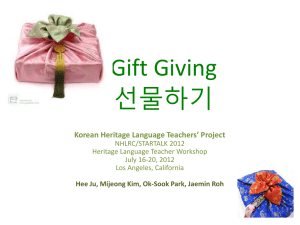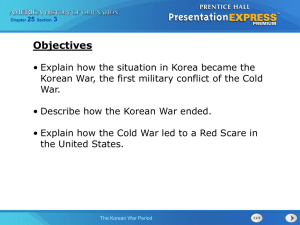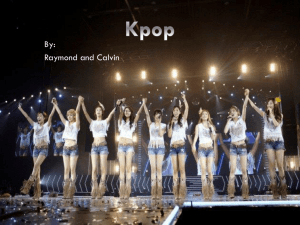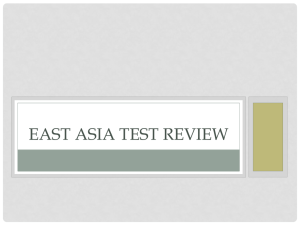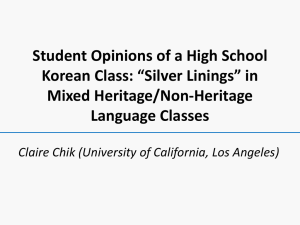Slide 1 - East
advertisement
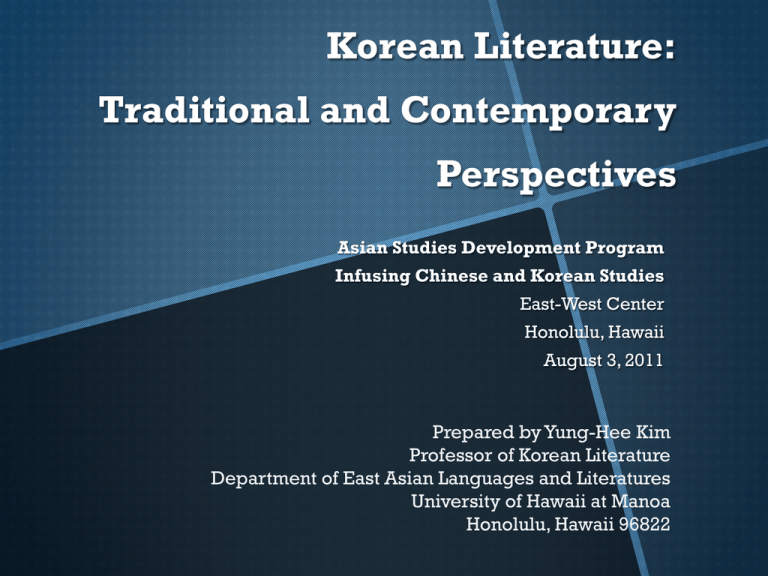
Korean Literature: Traditional and Contemporary Perspectives Asian Studies Development Program Infusing Chinese and Korean Studies East-West Center Honolulu, Hawaii August 3, 2011 Prepared by Yung-Hee Kim Professor of Korean Literature Department of East Asian Languages and Literatures University of Hawaii at Manoa Honolulu, Hawaii 96822 Chronology of Korean History 1. Old Chosŏn Kingdom (2333 B.C.-?) Founder: Tan’gun Capital: P’yŏngyang 2. Three-Kingdom Period 1) Koguryŏ (37 B.C. - 668 A.D.) Founder: King Tongmyŏng Capital: P’yŏngyang 2) Paekche (18 B.C. - 663 A.D.) Founder: King Onjo Capital: Puyŏ 3) Silla (57 B.C. - 668 A.D.) Founder: Pak Hyŏkkŏse Capital: Kyŏngju Chronology of Korean History 3. Unified Silla Kingdom (668 A.D.–935 A.D.) 4. Koryŏ Dynasty (918–1392) Founder: Wang Kŏn (King T’aejo) Capital: Songdo (Kaesŏng) 5. Chosŏn (or Yi) Dynasty (1392–1910) Founder: Yi Sŏng-gye (King T’aejo) Capital: Hansŏng (Seoul) 6. Japanese Colonial Rule (1910–1945) 7. Republic of Korea (1948– ) First President: Syngman Rhee Capital: Seoul Pre-modern Korean Literary Traditions 1. Foundation Myth Tan’gun, the sacred, politico-cultural hero Bear woman, tiger, and taboos Rite of passage Folk medicine Justification of national sovereignty Pre-modern Korean Literary Traditions 2. Classical Chosŏn Poetry: Sijo Prosody, structure, and artistry 청산은 내 뜻이요 녹수는 임의 정이 녹수 흘러 간들 청산이야 변할손가 녹수도 청산을 못 잊어 울어예어 가는가 황진이 Syllable Count of the Sijo (a) The basic standard: First line 3 4 Middle line 3 4 Last line 3 5 (b) Variants that occur: First line 2–5 3–6 Middle line 1–5 3–6 Last line 3 5–9 Control of the language Themes and images Sijo genre and kisaeng 4 (or 3) 4 (or 3) 4 4 4 3 2–5 2–5 4–5 4–6 4–6 3–4 Pre-modern Korean Literary Traditions 3. Tales Hŏ Kyun (1569–1618), “The Tale of Hong Kiltong” Social criticism Yangban classes and the marginalized Use of magic Overseas adventurism Utopian idealism 4. Popular Performances and Entertainment: P’ansori Ch’unhyang-ga (The Tale of Ch’unhyang) Love Social injustice and reform Humor Pre-modern Korean Literary Traditions 5. Later Poetry: Sasŏl sijo Break with regulated prosody 시어머님 며늘아기 미워 부엌 바닥을 구르지 마오 빚에 받은 며느리인가 값에 쳐온며느리인가 밤나무 썩은 등걸에 휘초리 난 것같이 매서우신 시아버님 볕 쬔 쇠똥 깉이 말라빠진 시어머님 삼년 결은 망태에 새 송곳부리 같이 뾰족하신 시누이님 당피 갈은 밭에 돌피 난 것 같이 샛노란 외꽃 같은 피똥 누는 아들 하나 두고 건 밭에 메꽃 같은 며느리를 어디를 머워 하시는고. New thematic trends Changes in images Women Writers and Major Issues in Modern/Contemporary Korean Literature 1. In Search of Women’s Identity Na Hye-sŏk (1896–1948). “Kyŏnghŭi” (1918) 2. Korean War Revisited Ch’oe Yun (b. 1953). “His Father’s Keeper” (1990) 3. Evolving Familial Relations and Old Age Pak Wan-sŏ (1931–2011). “Dried Flowers” (1995) Na Hye-sŏk (1896–1948) Ch’oe Yun (b. 1953) Père Lachaise Cemetery, Paris Mur des Fédérés, Père Lachaise Cemetery Monument du mur des fédérés, Paris Pak Wan-sŏ (1931–2011)
